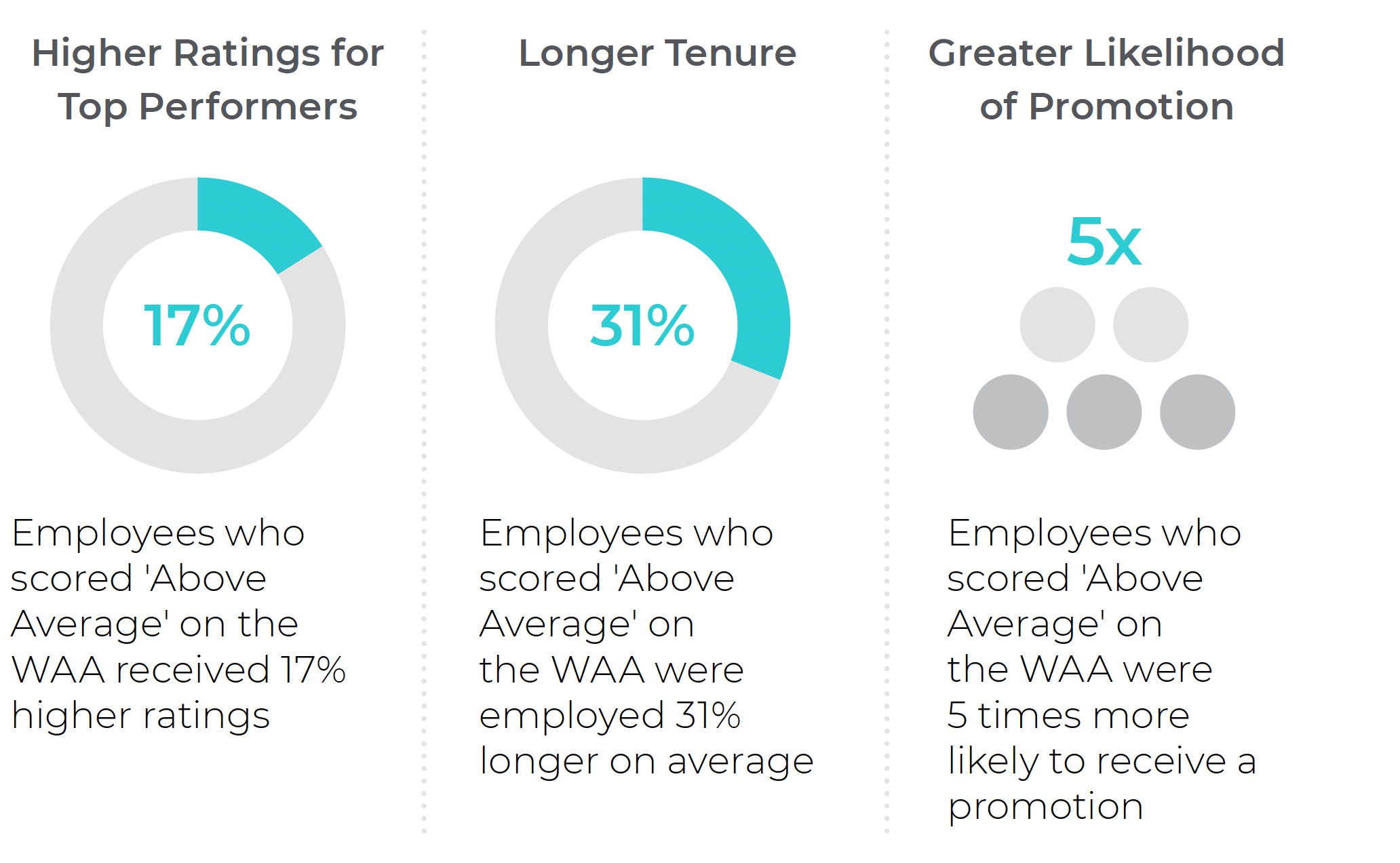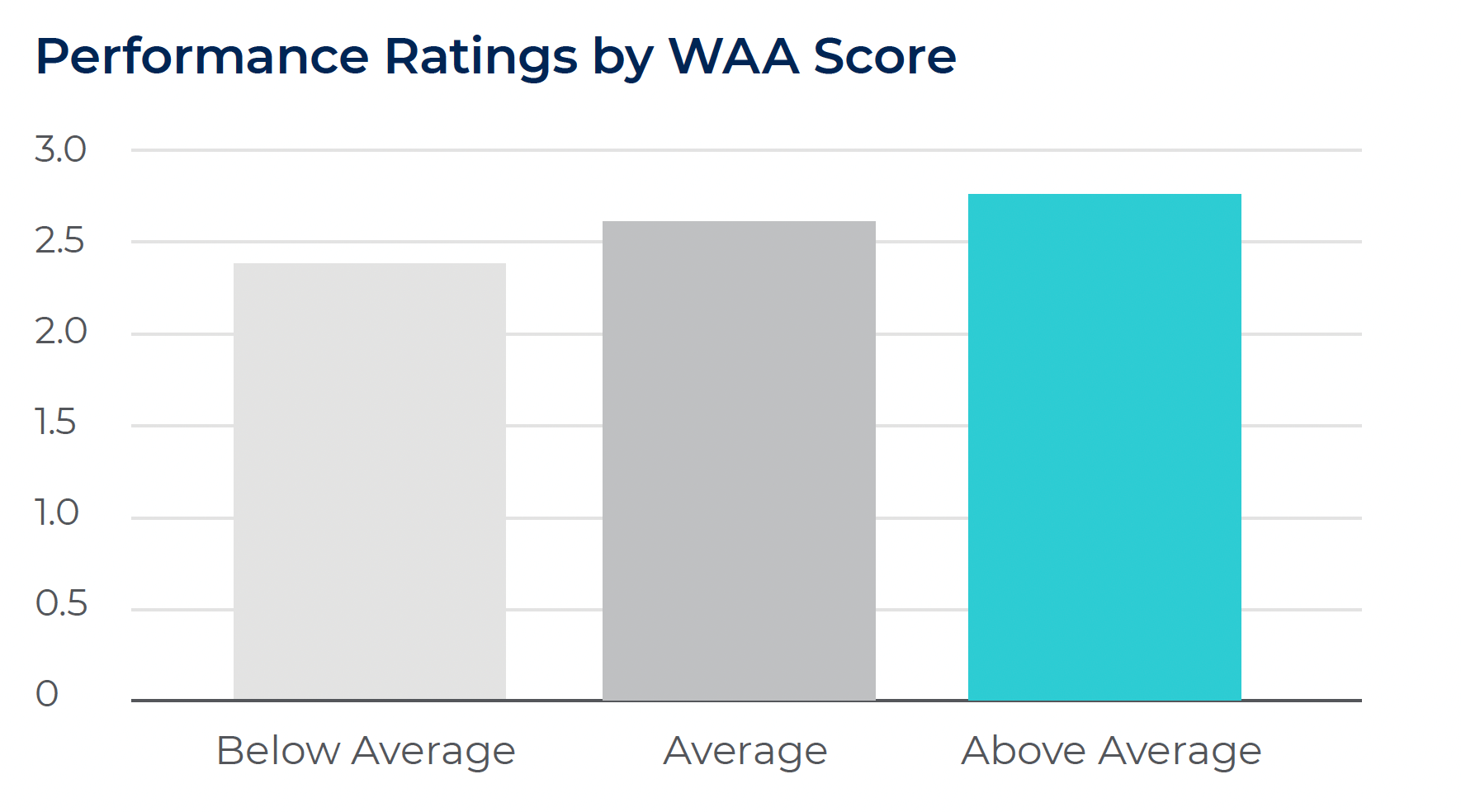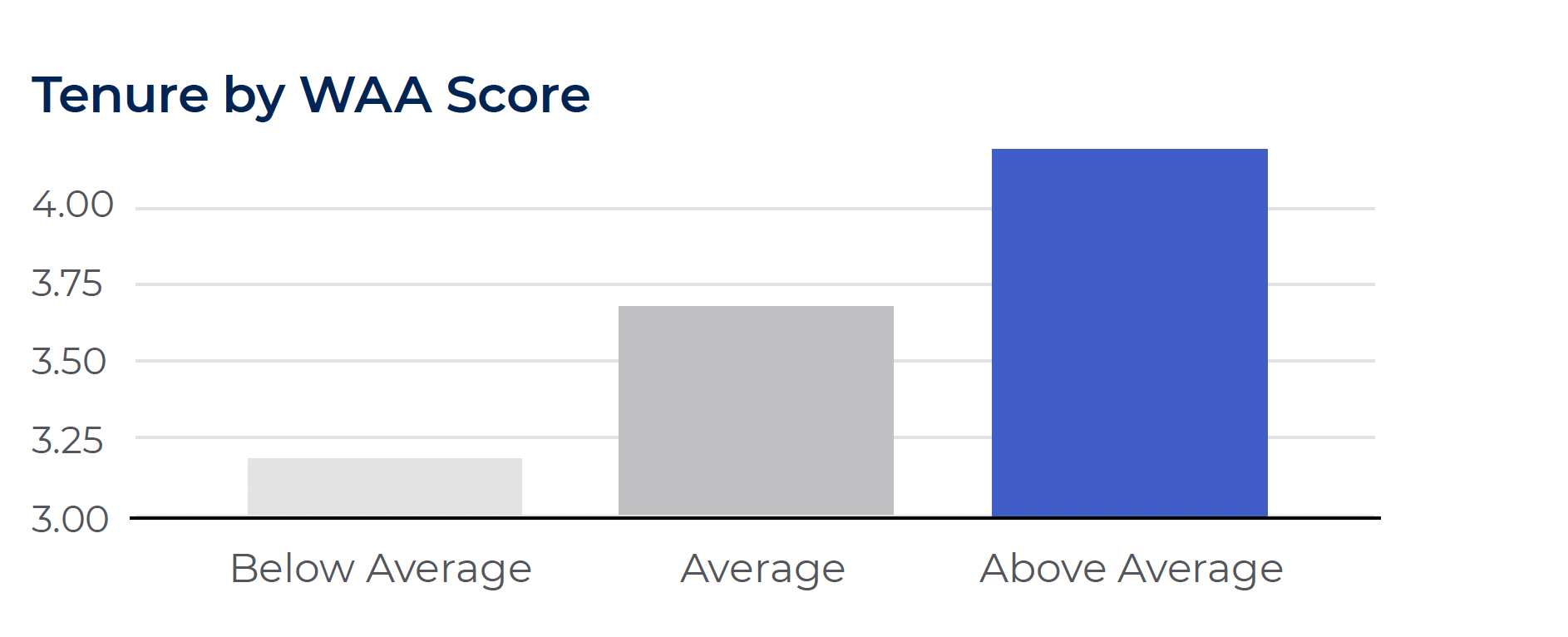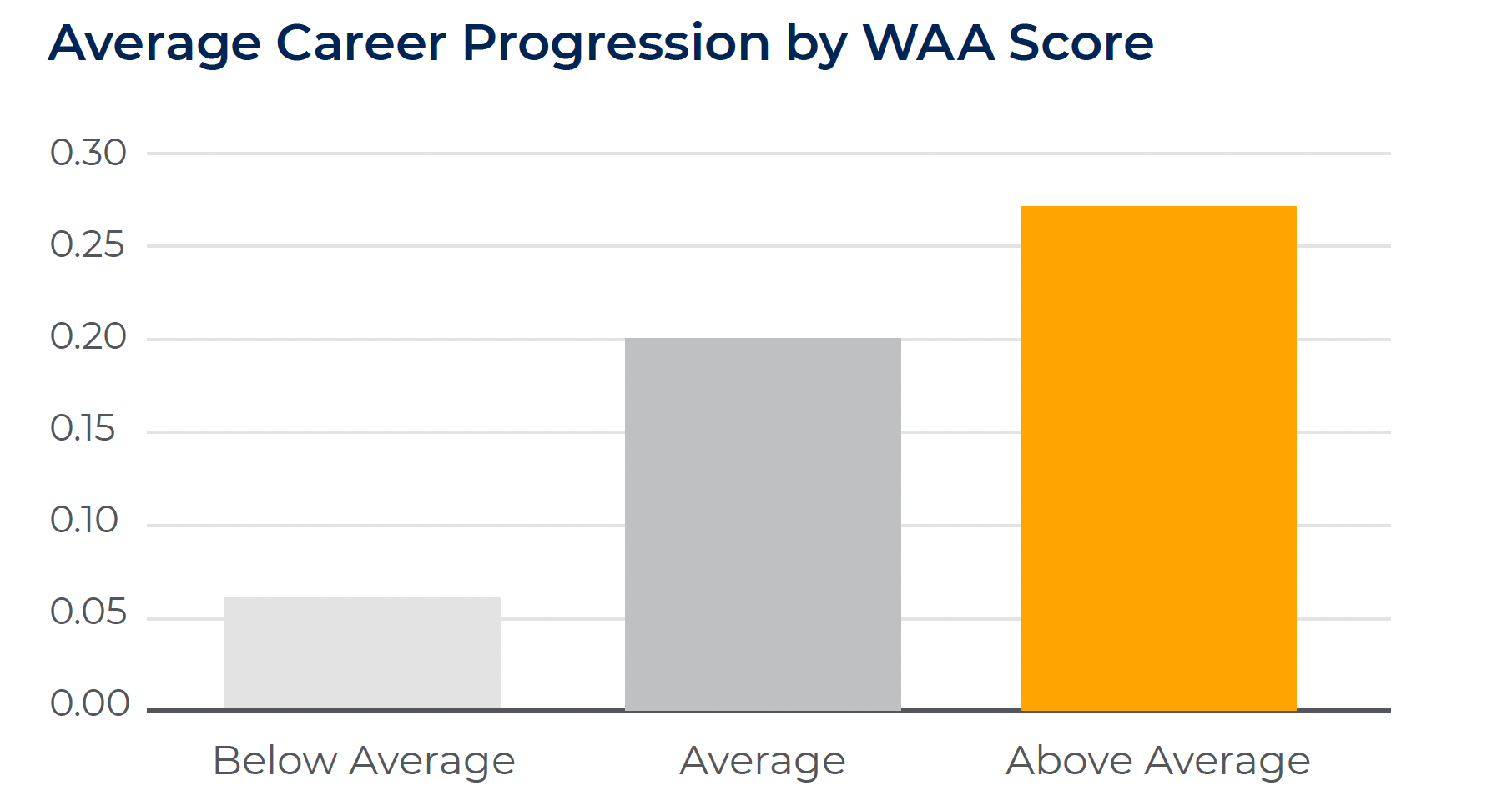Case Studies Federal Regulatory Authority Predicts Job Performance and Career Advancement
The Challenge
A major federal regulatory authority had been using the Workplace Alignment Assessment (WAA) for several years, to help them identify people who were more likely to be committed to the organization and stay for longer. They wanted to see what kind of impact the assessment was having on some of their key organizational outcomes, including job performance, tenure, and employee movement.
The Solution
We analyzed the WAA scores of candidates who were subsequently hired and compared them with manager ratings of job performance, tenure data and an employee movement descriptor.
Workplace Alignment Assessment (WAA) This assessment asks candidates to describe their ideal workplace using a standardized set of 20 work factors and compares these preferences to an organizational profile that describes what the organization offers its employees. By selecting candidates whose work preferences are aligned with what the organization provides, you'll build a more satisfied, engaged, and committed workforce.
The Results
We identified direct relationships between employees' WAA scores and the outcomes we analyzed.

Job Performance (Manager Ratings)
We compared WAA scores with the annual performance ratings of 251 employees. On average, employees who scored "Above Average" on the WAA received performance ratings of 2.7, while those with "Below Average" scores received performance ratings of 2.3. Employees with "Above Average" scores were rated 17% higher than those with "Below Average" scores.

Tenure
We compared WAA scores with the number of years that 251 employees were employed by the organization. Those scoring "Above Average" on the WAA were employed for an average of 4.2 years. Those scoring "Below Average" had an average tenure of 3.2 years. Employees with "Above Average" scores were employed for one additional year (31% longer) than those receiving "Below Average" score.

Employee Movement
We compared WAA scores with "movement descriptors" such as promotion, resignation, dismissal etc. Those scoring "Above Average" on the WAA had an average of 1.0 positive movements (promotion or career progression), while those scoring "Below Average" achieved 0.2 positive movements. Employees with "Above Average" WAA scores were 5 times more likely to receive a promotion than those with "Below Average" scores.
